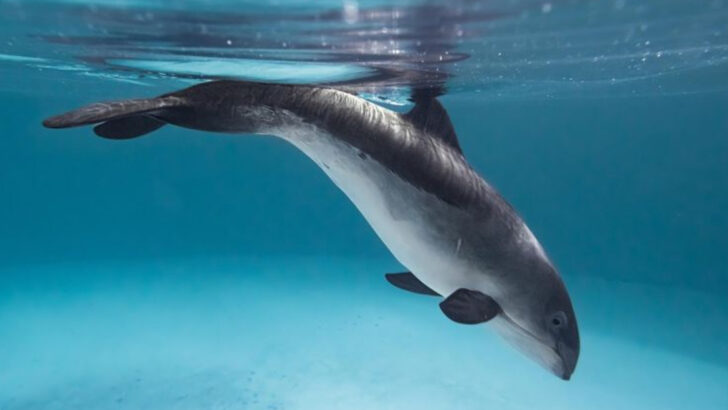You could swim right past one and never know it was there.
The harbor porpoise doesn’t crave attention. It doesn’t leap through the air or sing eerie underwater songs. It stays low, quiet, and fast—vanishing beneath the waves like a secret.
But make no mistake: this little marine phantom is packed with surprises.
It lives a high-speed life in cold, coastal waters, dodging danger and whispering to its kind in bursts of sound we can barely detect.
These small, shy mammals are masters of stealth, and they’re way tougher than they look.
Ready to meet the ocean’s most mysterious wallflower? Let’s dive in.
Quiet Communicator

Unlike their dolphin relatives, harbor porpoises are quiet communicators, relying on sonar to navigate their world. Their clicks are barely audible to the human ear. This adaptation allows them to hunt effectively in murky waters. Harbor porpoises use high-frequency sounds to locate prey and avoid predators. Their echolocation abilities are finely tuned, enabling them to perceive their surroundings with remarkable accuracy. These sounds are often used during the night or in turbid environments. Such a unique method of communication ensures they remain a step ahead in their watery realm.
Shy and Elusive
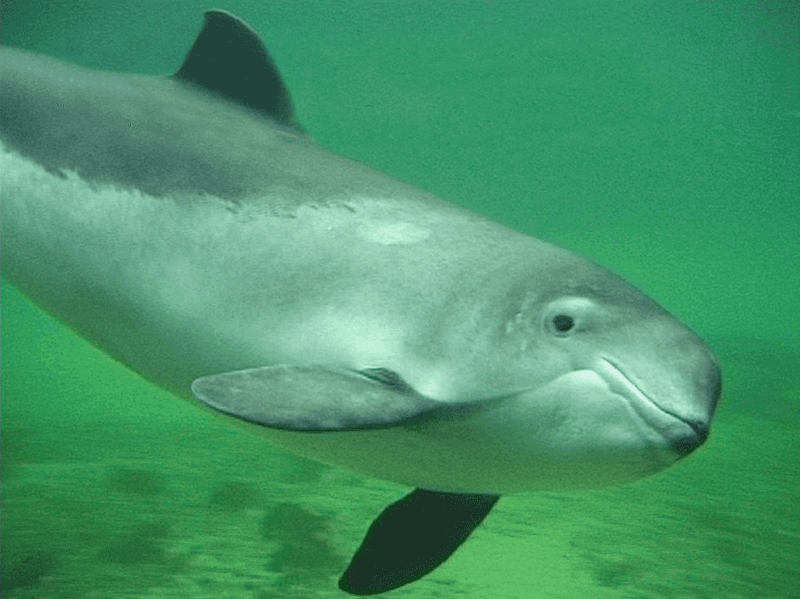
Harbor porpoises are known for their shy and elusive nature. Unlike dolphins, they rarely approach boats or engage in bow-riding. This behavior makes observing them a challenge, even for seasoned researchers. Their tendency to remain hidden is partly due to their preference for solitary or small group living. They are often seen alone or in pairs, making brief appearances before diving again. This elusive quality adds a layer of mystery to their existence, as they seem to slip away just as they are spotted.
Cold Water Specialist
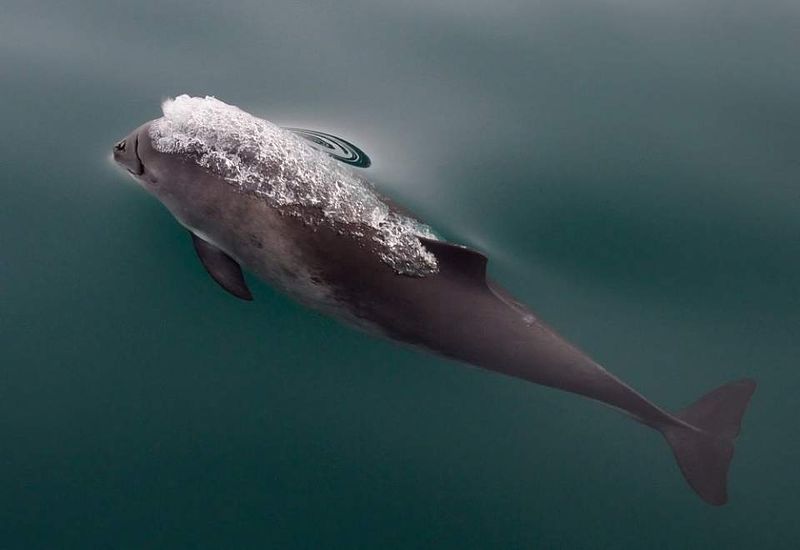
The harbor porpoise thrives in cold, northern waters and is frequently found in regions with low temperatures. Its thick layer of blubber provides the necessary insulation against the chill. This adaptation allows it to inhabit areas others might avoid. Unlike many marine mammals, the harbor porpoise doesn’t migrate long distances, preferring to stay in familiar, cooler locales. This preference for cold water is aligned with its diet and lifestyle. Its presence in these regions is an indicator of a healthy marine ecosystem.
Mysterious Traveler
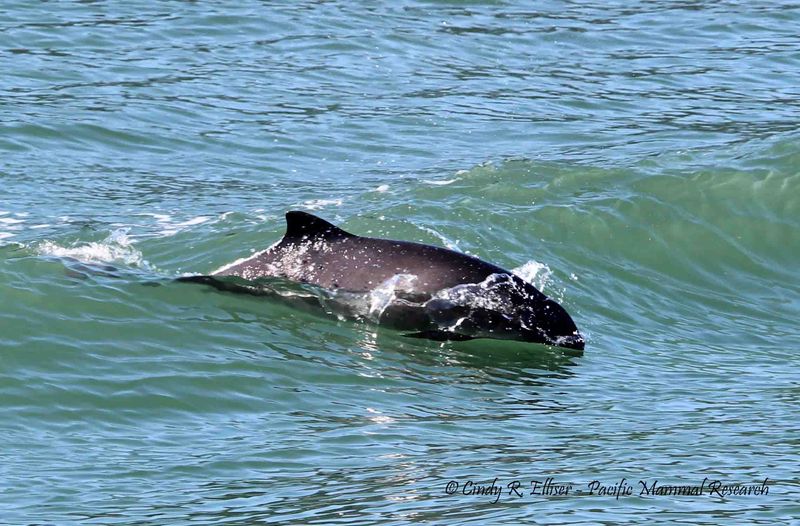
Despite their elusive nature, harbor porpoises are known to travel extensively within their home range. They are often seen navigating narrow channels and coastal waters, showing a remarkable ability to adapt to different marine environments. These travels are not migratory but rather exploratory, as they search for food and safe habitats. Their journeys often overlap with human activities, yet they remain enigmatic in their movements. This characteristic makes them an interesting subject for researchers trying to understand their habits and patterns.
Voracious Eater

With a diet that includes fish, squid, and crustaceans, the harbor porpoise is a voracious eater. It consumes a considerable amount of food relative to its size, needing to eat frequently to sustain its energy levels. This constant need for food drives its movements and behaviors. Its feeding habits are a testament to its role in the marine food web. Harbor porpoises often hunt in murky waters, using their echolocation skills to track down prey. Observing their feeding behavior provides insights into the health of marine ecosystems.
Compact and Sleek
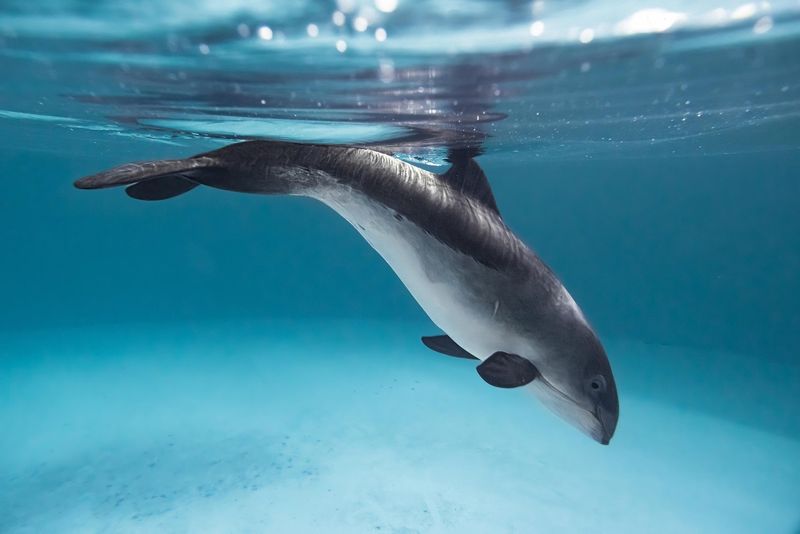
The harbor porpoise has a compact and sleek body designed for efficient swimming. Its small size, usually about 1.5 meters long, allows it to navigate through tight spaces with ease. This streamlined shape reduces drag, enabling quick movements and agile turns. The dark coloration on its back and lighter belly provide camouflage in the water, protecting it from predators. This physical design is not only about aesthetics; it’s a matter of survival. Its compact form allows the harbor porpoise to thrive in diverse coastal environments.
Silent Existence

Living in a world of sound, the harbor porpoise maintains a silent existence. Unlike its more vocal relatives, it rarely makes noise. Instead, it relies on subtle cues and sonar for communication and navigation. This silence is a survival strategy, helping it avoid detection by predators. The harbor porpoise’s quiet demeanor is a stark contrast to the bustling noises of the ocean. Its silent presence adds an air of mystery and grace to its movements. This trait sets it apart in the noisy marine environment it inhabits.
Socially Independent
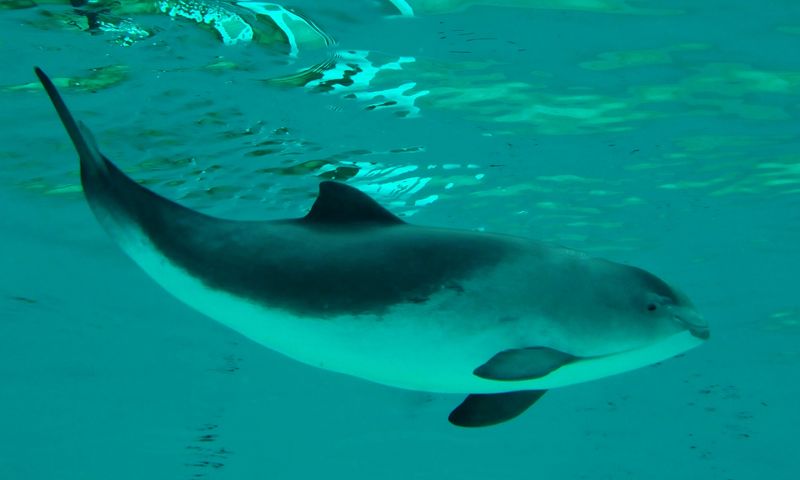
While some marine mammals are known for their social structures, the harbor porpoise prefers a more solitary existence. It often travels alone or in small groups, showing a degree of social independence. This behavior is not due to a lack of social skills but rather a preference for solitude. Such independence can be advantageous, reducing competition for food and mates. The harbor porpoise’s social habits are a reminder of the diversity of life strategies in the ocean. Its solitary nature is a testament to its adaptability and resilience.
Sensory Expert
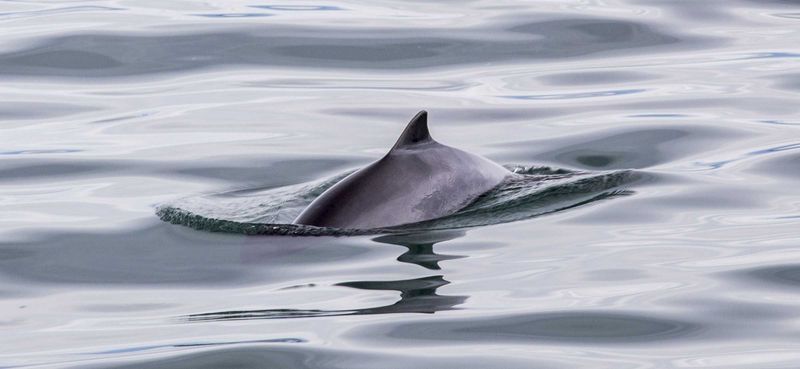
As a sensory expert, the harbor porpoise uses its acute senses to explore its environment. Its whiskers, or vibrissae, play a crucial role in detecting changes in water pressure and currents. This ability helps it navigate and find food even in challenging conditions. Its sensory skills extend beyond echolocation, providing a multi-faceted approach to understanding its world. The harbor porpoise’s reliance on these senses highlights its evolutionary adaptation to life in the ocean. Its sensory expertise is a key factor in its survival strategy.
Endangered Status
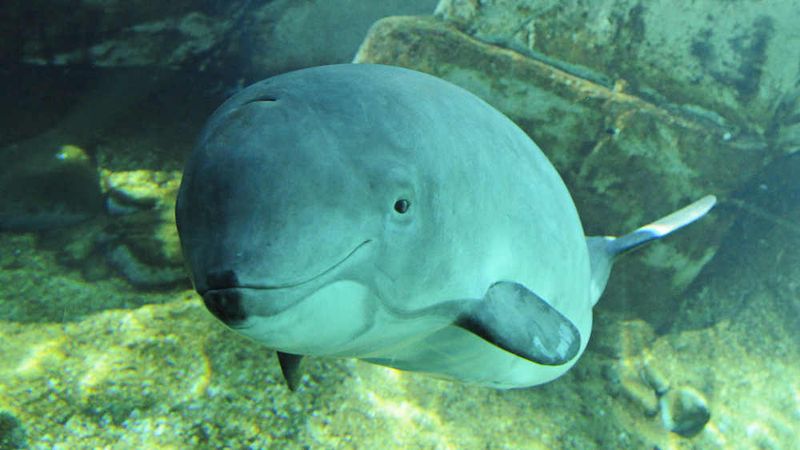
Facing numerous threats, the harbor porpoise is considered vulnerable in many regions. Bycatch in fishing nets, pollution, and habitat degradation are significant challenges to its survival. Conservation efforts are underway to protect this species and its habitat. Understanding the harbor porpoise’s endangered status is crucial for effective conservation strategies. Public awareness and regulations help mitigate some of the risks they face. Despite these efforts, their future remains uncertain, making conservation a priority. Protecting harbor porpoises ensures the preservation of marine biodiversity.
Unique Reproductive Habits
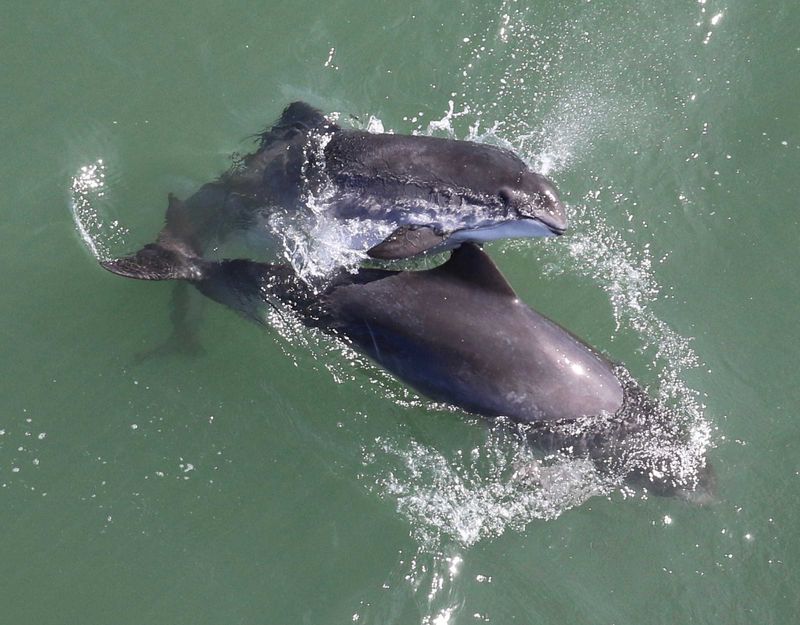
The reproductive habits of the harbor porpoise are both unique and fascinating. Females give birth to a single calf after a gestation period of around 10 to 11 months. This cautious investment in offspring ensures a high survival rate for the young. Calves remain with their mothers for several months, learning essential survival skills. The bond between mother and calf is strong, characterized by synchronized swimming and constant contact. This maternal care is crucial for the calf’s development. Understanding these habits provides insights into the species’ life cycle.
Adaptable Lifestyle
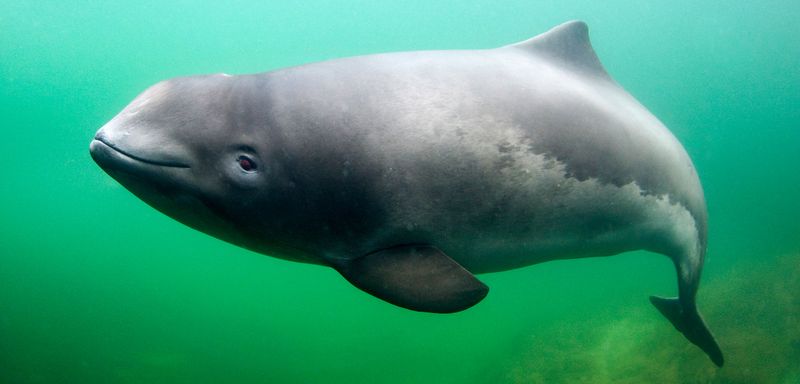
The harbor porpoise is an adaptable creature, capable of thriving in diverse environments. It inhabits both coastal and offshore waters, showing a remarkable ability to adjust to varying conditions. This adaptability is a response to changes in food availability, water temperature, and human activity. Harbor porpoises exhibit resilience, making use of available resources to survive and flourish. Their presence in different habitats is a testament to their versatility. This adaptable lifestyle ensures their continued existence in a rapidly changing world.
Cultural Significance
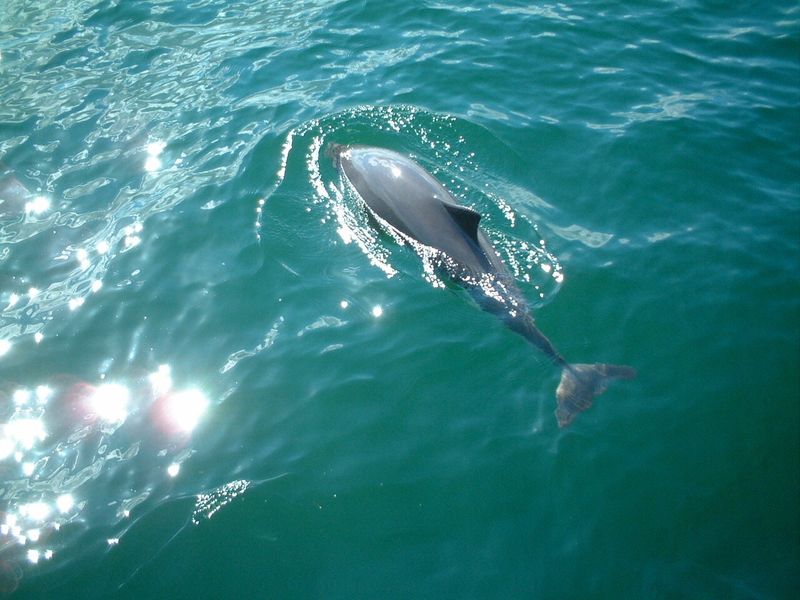
Throughout history, the harbor porpoise has held cultural significance for many coastal communities. It appears in folklore and stories, often symbolizing protection and guidance for seafarers. This cultural aspect adds a layer of depth to our understanding of the species. The harbor porpoise’s role in human culture reflects its importance beyond the natural world. These stories and beliefs highlight the deep connection between humans and marine life. Recognizing its cultural value enhances our appreciation for the species and inspires conservation efforts.
Eco-Friendly Traveler
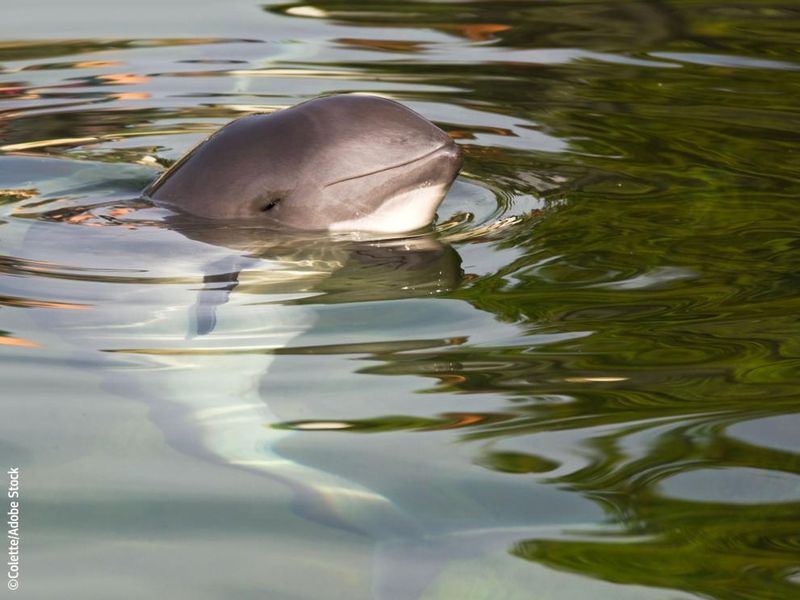
The harbor porpoise is often seen as an indicator of a healthy marine environment. Its presence signifies clean, sustainable waters, as it requires pristine habitats to thrive. This eco-friendly aspect makes it a valuable species for gauging ocean health. Monitoring harbor porpoise populations helps scientists assess environmental changes and address pollution issues. Their role as ecological indicators underscores the importance of preserving marine ecosystems. The eco-friendly traveler inspires efforts to maintain clean and healthy oceans for future generations.

